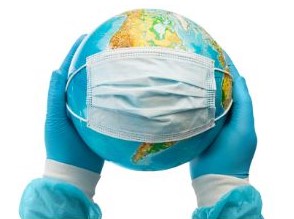The term “pandemic” evokes a wide range of emotions and concerns, particularly in light of recent global events. As we navigate through the complexities of infectious diseases, it’s crucial to understand the nuances of pandemics, their historical context, and the methods employed to prepare for and treat them. This document will delve into the definitions of pandemics and epidemics, explore the history of pandemics, outline preparation strategies, and discuss treatment options.
Pandemic vs. Epidemic
To grasp the concept of a pandemic, it is essential first to differentiate it from an epidemic:
- Epidemic: An epidemic refers to a sudden increase in the number of cases of a disease above what is normally expected in a specific geographic area. Epidemics can be localized and often result from a new strain of a virus or bacterium that spreads rapidly among a population.
- Pandemic: A pandemic, on the other hand, is an epidemic that has spread over multiple countries or continents, affecting a large number of people. The World Health Organization (WHO) defines a pandemic as a disease that has spread worldwide, typically affecting a significant proportion of the population.
Historical Context of Pandemics
Throughout history, pandemics have had profound impacts on societies, economies, and health systems. Here are some significant pandemics that have shaped human history:
- Plague of Justinian (541-542 AD): One of the first recorded pandemics, it devastated the Byzantine Empire, killing millions and contributing to its decline.
- The Black Death (1347-1351): One of the most infamous pandemics, the Black Death, swept across Europe, Asia, and North Africa, caused by the bacterium Yersinia pestis. It is estimated to have killed between 75 million and 200 million people, drastically reducing the population of Europe and leading to significant social and economic changes.
- The Spanish Flu (1918-1919): The Spanish Flu pandemic is another landmark event, caused by the H1N1 influenza virus. It infected approximately one-third of the world’s population and resulted in an estimated 50 million deaths globally. The Spanish Flu highlighted the importance of public health responses and the need for improved surveillance systems.
- HIV/AIDS Pandemic (1980s-present): Emerging in the late 20th century, the HIV/AIDS pandemic has affected millions worldwide. Although treatment options have significantly improved, the disease continues to pose a substantial health challenge, especially in certain regions. The response to HIV/AIDS has been multifaceted, focusing on prevention, education, and treatment.
- H1N1 Influenza Pandemic (2009): The H1N1 pandemic, also known as the swine flu, emerged in 2009 and resulted in thousands of deaths. It demonstrated the need for rapid public health responses and the importance of vaccination in preventing the spread of infectious diseases.
- COVID-19 Pandemic (2019-present): The COVID-19 pandemic, caused by the SARS-CoV-2 virus, has had a transformative impact on the world. Originating in Wuhan, China, in late 2019, the pandemic spread rapidly, leading to millions of infections and deaths globally. The response included widespread lockdowns, vaccination campaigns, and a renewed focus on global health equity.
Preparing for a Pandemic
Preparation is key to mitigating the impacts of pandemics. Effective preparation involves several critical components:
1. Surveillance and Early Detection
Robust surveillance systems are essential for identifying outbreaks before they escalate. Monitoring zoonotic diseases (diseases that jump from animals to humans) can help detect potential pandemics early. Health organizations must collaborate globally to share data and insights.
2. Public Health Infrastructure
Investing in public health infrastructure is vital for effective pandemic preparedness. This includes having trained healthcare professionals, adequate medical facilities, and access to necessary medical supplies. Community health programs can enhance resilience by educating the public about infectious diseases.
3. Vaccination Programs
Vaccines play a crucial role in preventing the spread of infectious diseases. Establishing and maintaining vaccination programs can significantly reduce the risk of pandemics. Developing vaccines for emerging pathogens should be a priority for health organizations.
4. Communication Strategies
Effective communication is critical during a pandemic. Public health authorities must provide clear and accurate information to prevent misinformation and panic. Community engagement and outreach can foster trust and compliance with health guidelines.
5. Emergency Response Plans
Developing and regularly updating emergency response plans is essential. These plans should outline the roles and responsibilities of various stakeholders, including healthcare providers, government agencies, and community organizations.
6. Research and Development
Investing in research for new treatments and vaccines is crucial for pandemic preparedness. Collaboration between governments, academia, and the private sector can accelerate the development of innovative solutions.
Treating a Pandemic
When a pandemic occurs, effective treatment and management strategies are essential for minimizing morbidity and mortality. Treatment approaches can vary based on the disease in question:
1. Antiviral Medications
For viral pandemics, antiviral medications can be effective. For instance, during the COVID-19 pandemic, medications such as remdesivir and monoclonal antibodies were utilized to treat severe cases.
2. Supportive Care
Supportive care, including oxygen therapy and mechanical ventilation, may be necessary for patients with severe respiratory symptoms. Ensuring access to healthcare services is crucial for managing patient outcomes.
3. Vaccination
Vaccination remains the most effective preventive measure during a pandemic. For example, the rapid development and distribution of COVID-19 vaccines have been instrumental in controlling the spread of the virus.
4. Public Health Interventions
Non-pharmaceutical interventions (NPIs) such as social distancing, mask-wearing, and quarantines can help slow the spread of infectious diseases. Implementing these measures effectively requires community buy-in and cooperation.
5. Mental Health Support
Pandemics can take a toll on mental health, leading to increased anxiety and depression. Providing mental health support services is essential for helping individuals cope during and after a pandemic.
6. Global Collaboration
Pandemics do not respect borders; thus, global collaboration is crucial. Sharing research, resources, and best practices can enhance the collective response to pandemics. Organizations such as the WHO play a vital role in coordinating international efforts.

Pandemics have shaped human history, highlighting the interconnectedness of global health. Understanding the differences between pandemics and epidemics, learning from historical events, and prioritizing preparation and treatment strategies are essential for navigating future public health challenges. By fostering global collaboration and investing in research and infrastructure, we can better equip ourselves to face the next pandemic.
In an increasingly interconnected world, the lessons learned from past pandemics can guide us in developing more resilient health systems and fostering a culture of preparedness, ultimately protecting public health on a global scale.







